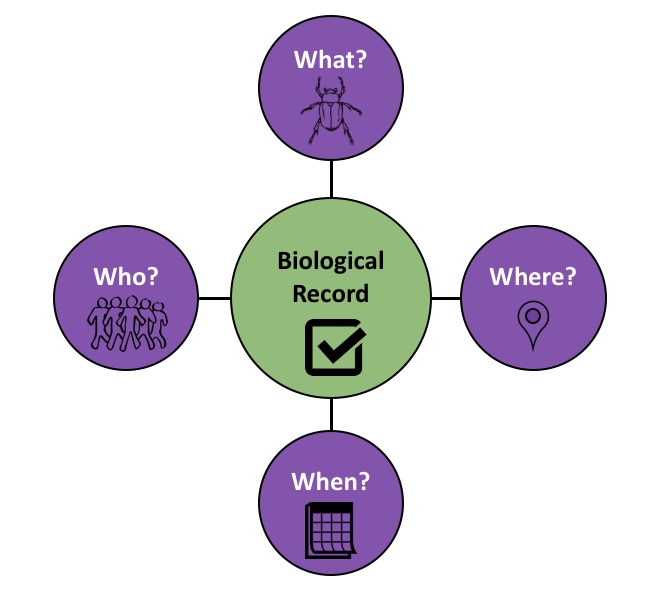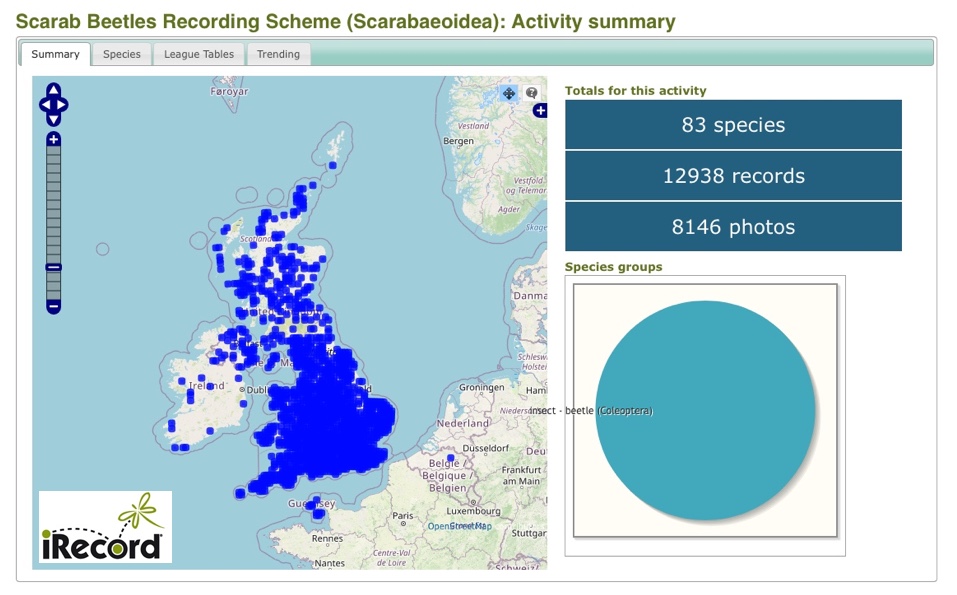Biological recording is the scientific study of the distribution of living organisms. The basis of a biological record is the ‘four Ws’:
What: the identification of the organism seen
Where: the locality where the organism was seen
When: the date that the organism was seen
Who: the person or persons making the observation

Always provide as much detail as you can. Additional information is often very useful and may include habitat, associations with other organisms, abundance and life stage. Also provide the most accurate geographical location you can. An 8 figure Ordnance Survey grid reference will provide a geographic resolution of a 10m x 10m square. This is much more useful that a four figure grid reference giving a resolution of 1km x 1km.
The person that identified or determined the organism may not be the same as the person that found and recorded it. It is important and courteous to acknowledge the determiner as this can be helpful to gauge the confidence level of a identification.
Why Record?
Effective nature conservation decisions depend on the availability of good quality biological records. Each record gives a dot on the map, a snapshot in time of where a particular species was. This information can be used for monitoring, track the spread or range contraction of a species, provide an early warning system if a species is in decline and help inform conservation policy or prioritise conservation efforts. It might even lead to the protection of a site.
More records provide more accurate distribution maps. It is therefore, good practice to record very common organisms as well as rarities. What is common and widespread now may not be in the future.
It is important to note that the absence of a dot does not necessarily mean that the organism is not there (although it might!). It could mean that no one has looked or it was simply not found on the day. This is often a problem for rare species with very low population numbers.
Recording Schemes
At a national level biological records are managed by the Biological Records Centre based at Wallingford in Oxfordshire. There is a system of recording schemes which includes the Scarab Beetles Recording Scheme. Recording schemes are usually voluntarily managed by one or a few knowledgeable individuals with a particular specialism for a biological group.
Submitting a Scarab Record
All British scarab records are very gratefully received. Please submit your records via the online recording form on iRecord. Your record will be verified by Darren or Ceri and we will provide feedback whenever possible to enable you to fine tune your identification skills. Please include a good quality close-up photo of the top and the underside of the beetle whenever possible. For some species it is helpful to have an image of a particular character necessary for proper identification. Please refer to the relevant species page to see if this is useful.
In some instances, identification may not be possible from a photo and we do not guarantee to be able to do this and it is just one reason why it is sometimes necessary to retain a preserved voucher specimen.
